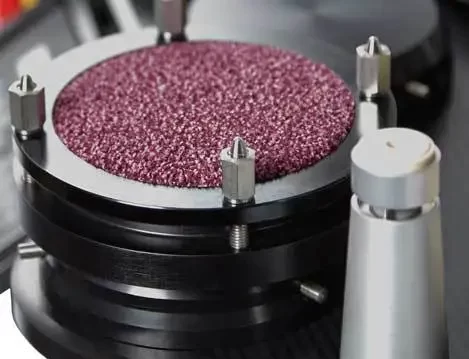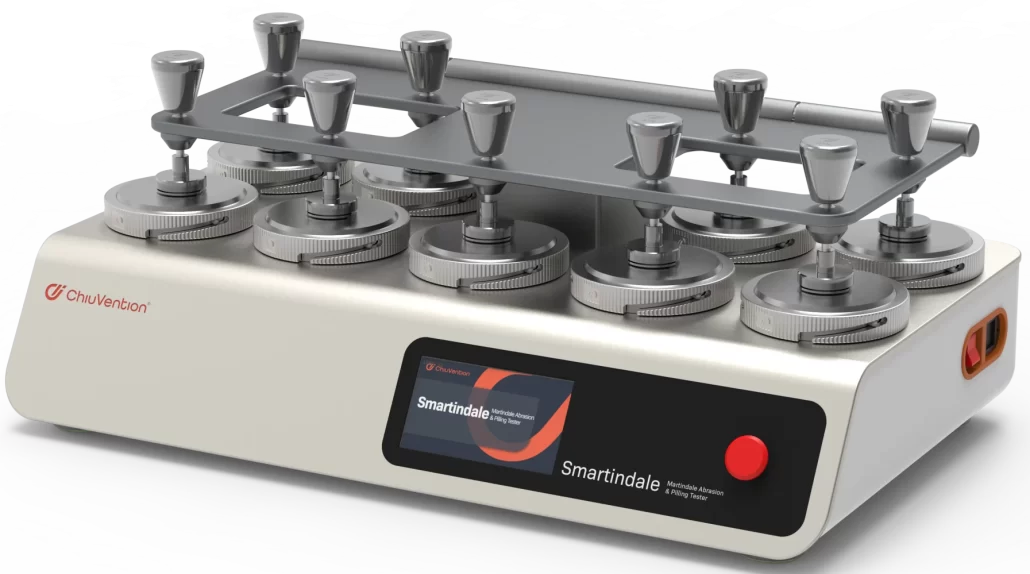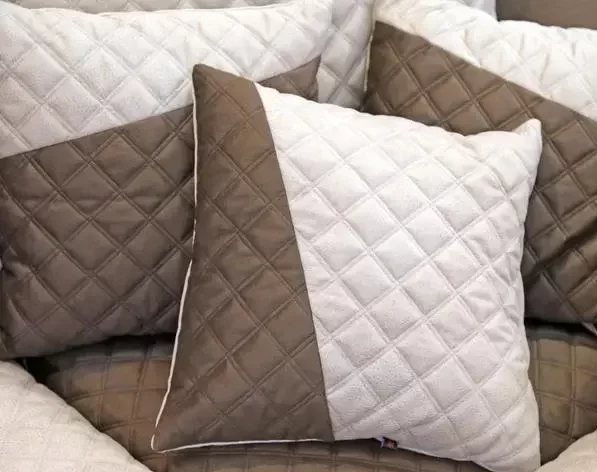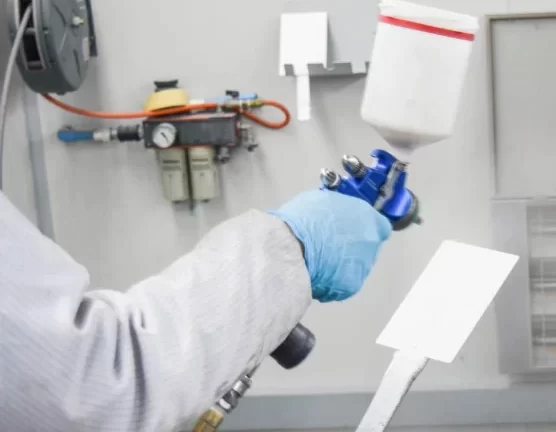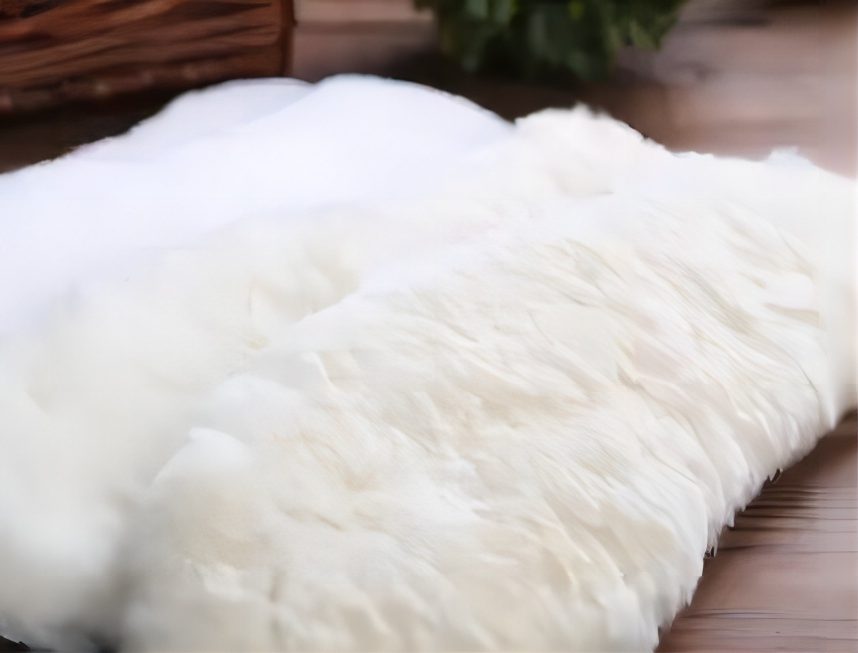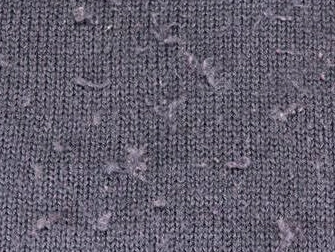How does the Martindale Tester work?
Using the Martindale Tester involves several steps. They are: preparing the sample, setting test parameters, testing, and analyzing the data. Below are the detailed steps for use:
Sample Preparation:
In a standard environment, lay flat and unstretched for a time set by different standards. For instance, EN ISO 12947-4:1998 requires a period of 16 hours.
Cut a specimen from different parts of the fabric. It should be representative of its entire width. For fancy fabrics, the specimen must show all the different tissues and colors in the fabric.
For pre-test humidification, the specimen should be in a standard environment at 21±1°C and 65±2% RH for at least 4 hours.
Test Parameter Setting:
Set the test parameters, such as load, number of cycles and test speed. A common standard load is 9KPa and the number of cycles is usually set to 1000. You can adjust the test speed for the fabric and test purpose. Higher speeds are usually for thicker, more durable fabrics.
Perform the test:
Place the sample on the test board and hold it. Check its position. The warp and weft yarns must align with the machine head’s movement.
Start the Martindale Pilling Tester and allow it to run for the specified number of test cycles. During the test, monitor the sample for any signs of damage or wear and record the results.
Data Analysis:
The abrasion test measures wear by weighing the specimen before and after. Pilling tests assess a sample’s tendency to pill. They count the number of puckers that form on the surface after the test. The tests usually use a scale of 1 to 5, where 5 indicates the most severe pilling.
We must use statistics to analyze test results and ensure they are accurate.
By following the steps above, one can use the Martindale Tester. It tests textiles for abrasion resistance and pilling. This will help with product quality control.
What should I pay attention to when using the Martindale Abrasion Tester?
When using the Martindale Abrasion Tester, take these precautions. They will ensure test accuracy and safe equipment use:
Friction cloth replacement:
Do not reuse friction cloths. Replace them with a new cloth after each test. If you have used the friction cloth 50,000 times, you should replace it.
You can repeatedly use wool felt, but you need to replace it when the surface becomes worn or stained. You can use wool felt on both sides to extend its lifespan.
Preparation of Insoles:
For insole testing, remove the cloth before the Martindale test.
Preparation of specimens:
Before testing, ensure the specimen’s surface is flat and wrinkle-free. Remove oil and impurities to avoid affecting the test results.
Installation of specimen:
Fix the specimen on the testing machine’s holder. Adjust its position so the friction head contacts the specimen surface evenly.
Parameter Setting:
Set the friction head material, pressure, speed, and friction times per the test. Choose the right parameters to get accurate results.
Observation and Record:
Regularly check the test specimen for wear and tear. Record the data for analysis.
Abnormal handling:
If there is any abnormality during the test, stop the machine. Check it to avoid damage or inaccurate test results.
These operational matters will ensure correct use of Martindale testers. They will yield reliable test results.
How do I maintain my Martindale tester?
A Martindale tester needs regular cleaning and checks of its condition. Replace worn parts and do any necessary maintenance.
Regular Cleaning:
To ensure cleanliness, you must clean and wash the instrument regularly. This prevents dust and dirt from accumulating. They can affect the instrument’s operation and test accuracy.
Checking the condition of the instrument:
The test instrument is regularly checked for any abnormalities. This includes checking the instrument for loose, worn, or damaged parts. It also includes checking the electrical connections.
Replace worn parts:
For example, replace standard abrasive cloths after each test. This ensures test accuracy. Felt lasts for 100,000 uses or until it hardens. Replace polyurethane foam pads after each test.
Necessary Maintenance:
If the Martindale Abrasion Meter has a problem with the screen not displaying or the main unit power light not coming on, you need to check that the emergency stop button, the power line connection, the emergency stop switch, and the fuses on the machine’s sockets are functioning properly. For screen garbled, check: 1. Is the instrument communication line loose? 2. Are there nearby large transformers causing interference? 3. Are the instrument parameters set correctly?
Professional maintenance:
If you can’t fix the faults, find the manufacturer’s tech. They can solve the problem and prevent further losses.
These measures will ensure the Martindale tester’s long-term, stable operation. They will improve test result reliability and extend the instrument’s life.
What are types of Pilling Testers?
There are six types of pilling testers: disc, Martindale, box, rolling box, chaotic tumbling, and round track. They also include Martindale abrasion testers.
The Disc Pilling Tester tests how much textiles pill. It tests their resistance to abrasion and pilling in real use. It simulates friction and pressure for this test.
The Martindale Pilling Tester is a common pilling tester. It tests textiles for pilling by simulating friction and pressure under specific conditions.
The Box Pilling Tester, on the other hand, tests textiles in a closed box. It simulates, through friction and pressure, the conditions of actual use.
Rolling box pilling testers suit most fabrics, especially wools. They test the pilling of fabrics under light pressure. They also test the abrasion resistance of fine-cotton, linen, and silk woven fabrics.
The Chaos Flip and Circle Track testers simulate fabric friction in use. They do this through a specific movement track. The tests assess textiles’ pilling performance.
Martindale abrasion testers are ideal for pilling tests on bedding. They also assess the abrasion and pilling resistance of textiles.
Each tester has unique traits. They suit different textiles and tests. This ensures accurate, reliable results.
How does the Martindale Abrasion Tester determine the abrasion resistance of fabrics?
The Martindale method is a standard test. It checks the abrasion resistance of textiles. This method has three main tests: the end-point, mass loss, and appearance change tests.
End-point method:
In woven fabrics, if two yarns of different warp and weft break, it’s a failure. And in knitted fabrics, it’s a failure if one yarn breaks. In non-woven fabrics, a hole of at least 0.5 mm is a failure. We record the number of rubbing times as an indicator of abrasion resistance.
Mass loss method:
To assess abrasion resistance, we compare the specimen’s mass before and after a test. We calculate the percentage of mass loss after a set number of rubs.
Appearance change method:
After rubbing, observe any changes in the specimen’s appearance, such as color changes or pilling. This will assess its abrasion resistance.
Also, the Martindale method includes two specific tests. They are: determining sample breakage and mass loss. A Martindale abrasion tester tests specimen breakage. It rubs a mounted specimen against a standard abrasive. The number of rubbings that break the specimen determines the fabric’s abrasion resistance. Weigh the specimens at intervals to find mass loss. Then, test the fabric’s abrasion resistance based on that loss.
This method has many uses. It applies to all types of textiles, including clothing, shoes, and home textiles. The testing process must consider many factors. These include the fabric’s fibre type and structure, the weaving, and the finishing. This is to ensure the tests are accurate and reliable. The test results can help with quality control and improvement of textiles. They can also help manufacturers and consumers assess textiles’ quality and service life.
How are the results judged by the Martindale Abrasion Tester?
The Martindale Abrasion Tester measures a textile’s abrasion resistance. It does this by counting the rubs until the specimen breaks. The Martindale method forms the basis of this test method. It evaluates fabrics’ abrasion resistance by simulating likely, real-world rubbing conditions. The test results are cycle scores of 1,000 rubs or completions. Higher scores mean the fabric is better for heavy use. The test results categorize fabrics as suitable for different uses.
If the test result is under 1,000 wipes, use the fabric only for decoration, like accents and cushions. It is not for general use.
If the fabric can provide results of 10,000 to 15,000 wipes, it is suitable for occasional use on furniture.
Fabrics that can withstand 25,000 to 30,000 wipes are suitable for heavy-duty work. This encompasses the primary furniture in a house that people will use daily.
Fabrics that withstand over 30,000 wipes are for heavy-duty, commercial use.
Martindale Abrasion Tester results are also evaluated by three methods: the Specimen Break Method, the Loss of Mass Method and the Change in Appearance Quality Method. Of these, the specimen breakage method is widely used due to its low error and intuitive test results. The mass loss and appearance quality change methods are harder to assess. But, they can show the samples’ abrasion resistance at different friction stages. This is very useful for analysing fabrics in production firms or research labs. The assessment of test results also involves factors like sample pre-treatment, abrasives, and test pressure. These ensure accurate and repeatable tests.
What are the applications of Martindale abrasion testers?
Martindale abrasion testers are used in a wide range of applications, covering a number of industries and sectors. The following is a detailed summary of the range of applications:
First, the basic research and development of materials science
Evaluation of new materials:
In materials science research, the Martindale abrasion tester tests new materials’ abrasion resistance. It helps to modify and develop new materials.
Material Performance Comparison:
Comparing the wear tests of different materials shows their performance differences. This provides a basis for selecting and applying materials.
Second, mechanical engineering and manufacturing
Component wear test:
In mechanical engineering, many parts, like bearings and gears, must endure friction and wear for long periods. The Martindale wear testing machine can simulate the wear of these parts in real working conditions. It can assess their wear resistance and service life.
Engine Component Evaluation:
Engines are the heart of machines and equipment. Their parts face high temperatures, pressures, and friction from high speeds. Martindale wear testers can assess the wear resistance of engine parts. They can also test their service life.
Third, the automotive industry
Tyre wear test:
Tyres are vital to a car. Their wear resistance affects the car’s safety and lifespan. A Martindale abrasion testing machine can simulate tyre wear. It can test different road surfaces and conditions to assess wear resistance.
Brake pads:
Brake pads are vital to the braking system. Their wear affects the car’s braking and safety. The Martindale wear tester can assess the wear and life of brake pads.
Aerospace
Aircraft materials testing:
In aerospace, aircraft materials must resist extreme conditions and harsh environments. Martindale abrasion testers can test aircraft materials for abrasion resistance. This ensures they are stable and reliable in extreme conditions.
Fourth,textile and Leather Industry
Textile abrasion testing:
In the textile industry, the abrasion resistance of materials directly affects the service life of the product and consumer satisfaction. Martindale abrasion testing machine can be used to test the abrasion resistance of textiles, such as clothing, carpets and so on.
Fifith,leather products abrasion resistance assessment:
As a high-end product, leather’s abrasion resistance is now a hot topic. Martindale abrasion tester can be used to assess the abrasion resistance and service life of leather products.
Sixth, building and decorative materials
Building material testing:
For building materials like floor tiles and stone, wear resistance is key. It affects their durability and service life. Martindale abrasion testers can be used to test the abrasion resistance of these building materials.
Evaluation of outdoor facilities:
Outdoor facilities, like walkways and railings, must resist wear. This affects their safety and service life. A Martindale wear tester can evaluate these facilities’ wear resistance. Then, we can develop maintenance plans.
Sevevth,other Application Areas
Customised testing:
Martindale wear testers can provide custom testing solutions, per customer needs. They meet the testing needs of various industries and fields.
Coating and Surface Treatment Evaluation:
Martindale abrasion testers can test surface treated parts (e.g., sprayed, plated, etc.). They can check the treatment’s effects, like its resistance to wear and rust.
What are the Martindale tester standards?
Martindale testing standards include: international, ASTM, Chinese, EU, and BSI standards. Details are as follows:
International Standards:
ISO 12945.2: Determination of pilling of fabrics – Martindale method
And ISO 5470: Rubber or plastic coated fabrics – Determination of abrasion resistance
ISO 12947: Textiles. It describes the Martindale method to test textile abrasion resistance.
American Society for Testing and Materials (ASTM) Standard:
ASTM D4966: Abrasion Resistance of Fabrics Martindale Abrasion Tester
ASTM D4970: Textile Abrasion Resistance Test Martindale Method
Chinese National Standard:
GB/T 4802.2: Textiles Determination of the pilling performance of fabrics
GB/T 21196: Textiles. Martindale method for abrasion resistance of textiles. It covers the Martindale tester, specimen breakage, quality loss, and appearance changes.
GB/T13775: Abrasion resistance test for cotton, linen and silk woven fabrics
European Union Standard:
ISO 12947: Textiles Determination of abrasion resistance of textiles by Martindale method
British Standards Institution Standard:
BS ISO 12947: Textiles. Test fabric abrasion resistance by the Martindale method.
These standards set test methods and requirements for Martindale testers. They ensure that test results are accurate and comparable. Also, when using the Martindale tester, some things need attention. This will ensure the test runs smoothly and the results are reliable.
How are the experimental results of the Pilling Tester analysed?
Analyzing the Pilling Tester results involves several aspects. These include the test method, conditions, and principle. Also, we must evaluate the results.
Test Methods:
The pilling test uses four main methods. They are the circular trajectory, Martindale, pilling box, and random tumbling methods. Each method has its own traits. They suit different textile tests. For example, the circular track method simulates pilling from external friction. It applies to woven and knitted fabrics. The Martindale method simulates pilling from constant friction. It applies to woolen and other easily pilling woven fabrics.
Test conditions:
Test conditions include pressure, friction times, and methods. Their choice affects the results. For example, the pilling box method uses a rough, rotating box. Someone wraps a fabric around a mandrel and rolls it a set number of times in the box. Then, evaluate it by comparing it to a standard sample or its photo.
Test Principle:
The test principle relies on fabrics experiencing friction under specific conditions. It assesses their pilling performance by simulating the friction of actual wear. For example, the circular track method uses nylon brushes and abrasives to rub the sample. This causes pilling. Then, it visually describes the pilling under specified light conditions.
Evaluation of results:
Results are usually evaluated using visual ratings or numbers. For example, pilling grades of 1-5. A lower grade means worse pilling, while a higher grade means better anti-pilling. The evaluation process may involve several raters. They will compare the specimen to a standard sample photo under a standard light source. The result is the pilling grade of the specimen.
In summary, the analysis of the pilling tester‘s results covers the test method, conditions, principles, and criteria. Together, these factors affect the accuracy and reliability of the results.
How are Martindale tester results evaluated?
Three methods evaluate the results of the Martindale tester. They are: the degree of damage, the loss of quality, and the change in appearance of the fabric.
The Martindale tester evaluates the abrasion resistance of fabrics. Its test results are mainly assessed by three methods:
Specimen breakage method:
This is the most common test. It checks fabric abrasion resistance by seeing if the specimen breaks. This method has a small error. The test results are intuitive. So, it’s easy to compare the abrasion resistance of different fabrics. The test results are a fraction of 1000 rubs or cycles. Higher scores mean the fabric is better for heavy use. Fabric experts can classify fabrics by their test results. They can sort them into different usage categories.
If the result is under 1,000 rubs, use the fabric for decorative purposes, like accents and cushions. It is not recommended for general use.
If the fabric scores 25,000 to 30,000 rubs, it is for heavy-duty work. You can use it for commercial furniture and environments.
Above 30,000 rubs, the fabric is suitable for both commercial and heavy-duty use.
Mass Loss Method:
This method tests a sample’s abrasion resistance at various friction levels. It suits analyzing fabrics in manufacturing companies or research institutes.
Appearance quality change method:
This method can assess the change in the fabric’s appearance due to friction. It is practical, but more complex to assess.
In summary, the Martindale tester‘s results use the specimen fracture method. The mass loss and appearance quality change methods are also used. They provide a more complete assessment. Together, these methods test fabrics’ abrasion resistance. They help judge their suitability for practical use.
How do I select a Martindale tester?
When choosing a Martindale tester, consider several key factors. They will ensure the instrument meets your testing needs and standards. Below are some guidelines:
Determine testing needs:
Firstly, define the purpose and requirements of the test. Martindale testers mainly test the abrasion resistance of textiles. This includes woven, knitted, non-woven, and coated fabrics, as well as decorative materials. They also test for pilling performance. So, the choice of the instrument should consider if it meets these testing needs.
Consider instrument performance:
A Martindale tester has four performance indicators. They are: adaptability in size and shape, the media type, an adjustable abrasion rate, and a data system. These performance criteria determine the instrument’s ability to simulate different wear environments and assess the wear resistance of materials under different conditions.
Compliance with relevant standards:
When choosing an instrument, ensure it meets all relevant standards. These include international, national, or industry standards. For example, standards like ISO 12947, ASTM D4966, and GB/T 4802.2 specify test methods and guidelines. They ensure the accuracy and reliability of test results.
Consider ease of operation and maintenance:
Choosing instruments that are easy to operate and maintain saves time and costs. Also, know the instrument’s procedures, maintenance, and manuals.
Brand name and after-sales service:
Choosing products from well-known brands usually provides better quality and after-sales service assurance. Also, consider the supplier’s after-sales service policy. This includes equipment maintenance and calibration services.
In summary, choose a Martindale tester by considering: 1. testing needs, 2. performance, 3. standards met, 4. ease of use, and 5. brand support. This ensures the tool meets testing needs, gives accurate results, and is easy to use and maintain.
For more information on textile testing methods/standards
or textile testing machines, contact us:
What’s App: +86 180 2511 4082
Tel: +86 769 2329 4842
Fax: +86 769 2329 4860
Email: [email protected]

